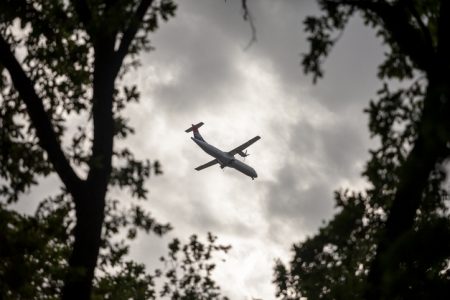Crew Resource Management Can Change Flight Trajectory
Crew resource management (CRM) is vital in any aircraft. You may have heard the story of the crusty old pilot who gave his new first officer (FO) the worst briefing ever. He said, “Son, if we have an engine fire, the first thing I want you to do is give me a lighter so I can light my cigarette.” Although this method may not work for everyone, there is something to be said for keeping cool under pressure.
In most professional flying careers, the “identify, verify, and do” memory item procedure is traditional. Essentially, both pilots must identify which engine has failed or is on fire, without touching anything, before taking any further action. This procedure works to ensure that the right steps are taken to handle an emergency in a laid-back manner.
Pilots must take care when dealing with faulty engines. To avoid tragic accidents, the pilot flying (PF) must ensure that the correct engine is identified and protected by their hand before requesting verification from the pilot not flying (PNF). Once confirmed, the PNF can safely move the power lever of the faulty engine to idle. This quick and simple procedure adds only 15 seconds but can prevent disastrous mistakes. Unfortunately, hasty actions have led to errors in the past, with pilots accidentally disabling the wrong engine, resulting in a double engine failure. Effective communication and CRM are essential for safe flying. Remember, speed is not always of the essence.
Crew Resource Management Techniques to Enhance Flight Safety
Below is a list of ways pilots can use CRM to ensure the safety of their flight:
- Work collaboratively with crew members: Pilots should use CRM techniques to work collaboratively with their crew members to identify potential hazards and mitigate risks. This includes open communication and sharing of information, as well as encouraging the crew to speak up if they notice any safety concerns.
- Promote a positive work environment: Creating a positive work environment in the cockpit can help promote clear communication and effective decision-making. This includes fostering a culture free of blame or criticism, where crew members feel comfortable speaking up and taking action to prevent accidents.
- Communicate effectively: Effective communication strategies are essential for promoting safety in the cockpit. Pilots should use CRM techniques such as closed-loop communication, repeat-backs, and active listening to ensure clear communication and avoid misunderstandings.
- Promote situational awareness: CRM techniques can help promote situational awareness by encouraging pilots to constantly scan their environment for potential safety hazards. Pilots should also use tools such as checklists, procedures, and briefings to ensure everyone on board is aware of the current situation.
- Practice effective decision-making: Pilots should use CRM techniques to practice effective decision-making, including involving the crew in the decision-making process and considering all available information before making a decision.
- Encourage crew resourcefulness: Encouraging crew resourcefulness is another way to promote safety in the cockpit. Pilots should empower the crew to take action and make decisions when necessary to prevent accidents.
Yeti Airlines Flight ATR72
If you are in a situation when something bad happens, stop. Breathe and think. Those couple of seconds are not going to kill you. Taking the wrong action will. Case in point, the preliminary report has been released for the Yeti Airlines ATR 72-500 flight that crashed in January 2023 which confirms that both engines were inadvertently feathered as they flew the final moments of a visual approach into Pokhara International Airport. “Inadvertent” because the flight data recorder (FDR) did not show any engine anomalies.
Both pilots were experienced, and both were captain qualified. They were doing an airport familiarization flight for the pilot in the left seat – the other pilot was acting as the instructor. From the sound of the CVR, the pilots did not know that both propellors were feathered.
Investigators have pieced together what they think happened based on several clicking noises and the subsequent changes (or not) in the engines and control surfaces. As for the fatal mistake, they believe that the pilot in the right seat meant to set the flaps to 30, but inadvertently selected the condition levers to feather. Had the pilots used better CRM techniques, this accident may have been entirely avoidable.
Conclusion
By utilizing CRM techniques, pilots can work collaboratively with their crew members to identify and mitigate risks, communicate effectively, promote situational awareness, practice effective decision-making, and encourage crew resourcefulness. Ultimately, CRM plays an essential role in preventing accidents and promoting aviation safety.










